Key takeaways:
- Transformative justice focuses on healing and community involvement, prioritizing reconciliation over punishment.
- The anti-death penalty movement challenges systemic inequalities and advocates for the potential of rehabilitation and redemption.
- Restorative justice emphasizes accountability and understanding, aiming to restore balance within the community.
- Community engagement strategies, such as workshops and art installations, foster dialogue and awareness about the impact of the justice system.
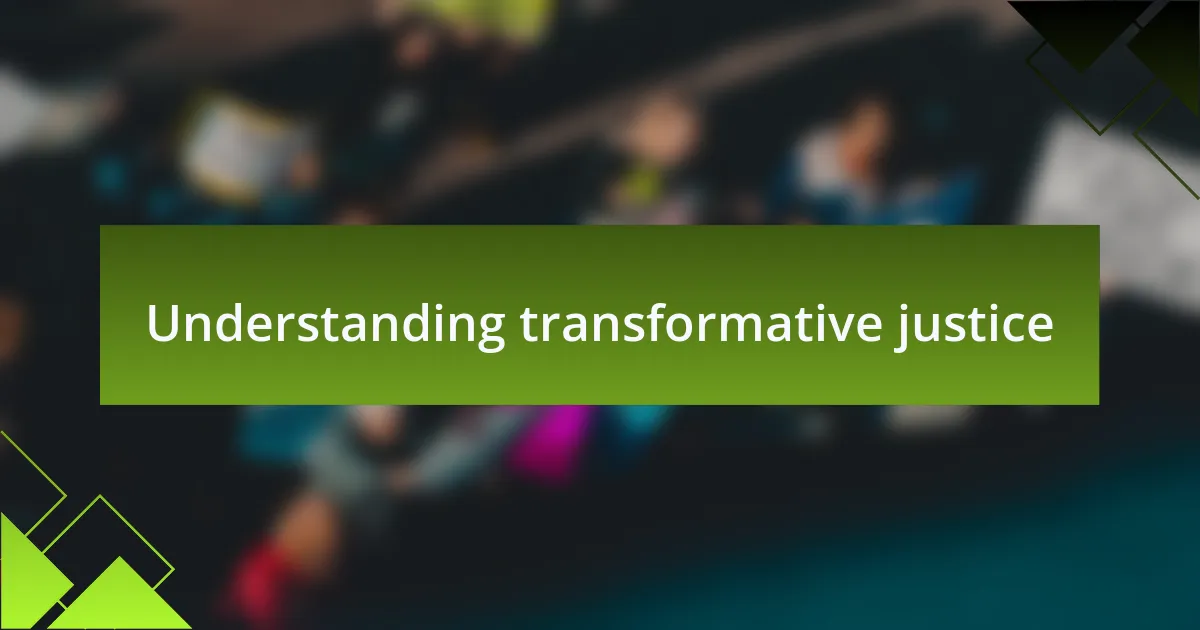
Understanding transformative justice
Transformative justice is an approach that aims to address harm by focusing on healing rather than punishment. When I first encountered the concept, I was struck by its emphasis on community involvement and accountability. I wondered, what if our justice system prioritized healing relationships instead of merely inflicting retribution?
In my experience, transformative justice invites us to reconsider how we respond to wrongdoing. It challenges us to ask difficult questions, like how we can support victims while encouraging accountability from offenders. Reflecting on a community-based project I volunteered for, I saw firsthand how individuals could reconcile past harm and build more resilient environments through open dialogue and restorative practices.
What truly captivates me about transformative justice is its potential to change narratives. I remember a poignant moment when a facilitator shared a story about a conflict resolved through empathy and understanding rather than traditional punitive measures. It made me realize that by prioritizing healing and community, we can create spaces where everyone feels seen and valued. Isn’t that a goal worth striving for?
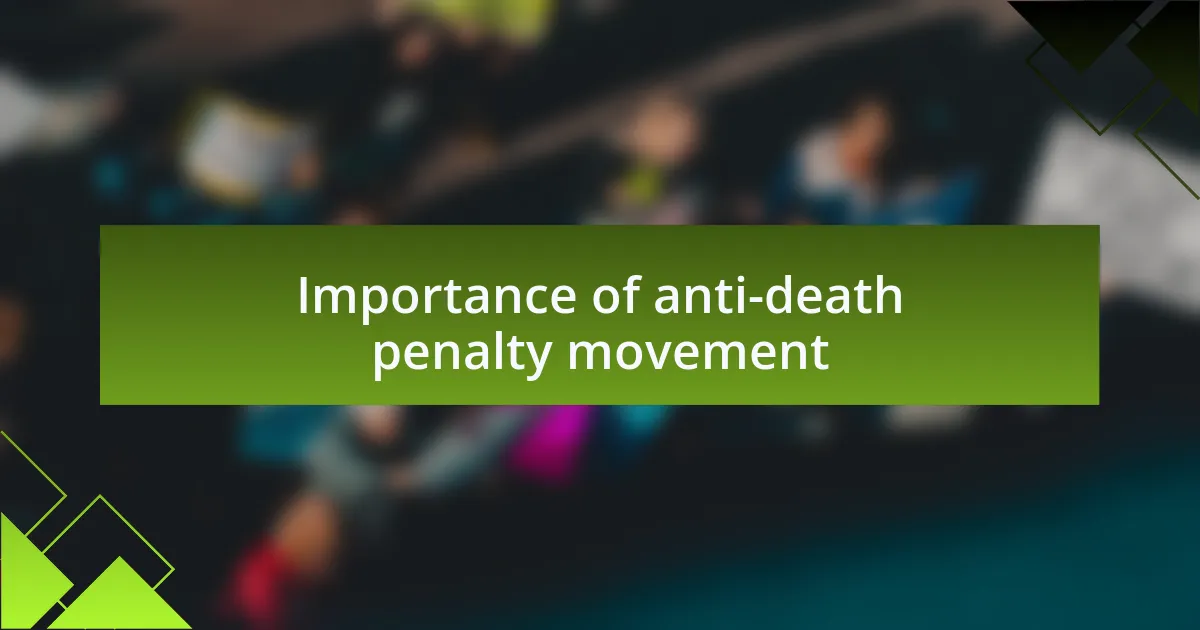
Importance of anti-death penalty movement
The anti-death penalty movement plays a vital role in challenging systemic inequalities ingrained in our justice system. I often reflect on the profound impact this movement has on the lives of those facing execution, many of whom are victims of socio-economic disadvantages and biased legal representation. It raises a compelling question: how can we claim to uphold justice when marginalized communities bear the brunt of capital punishment?
Moreover, advocating for the abolition of the death penalty serves to highlight the possibility of rehabilitation over irreparable harm. I recall attending an event where a former inmate shared their journey of transformation after being released from prison. It reminded me how powerful redemption can be and how the anti-death penalty movement emphasizes that everyone deserves a chance to change and grow, regardless of their past.
Ultimately, the movement underscores a moral stance against state-sanctioned killing, urging us to consider the value of every human life. I often ask myself, what does it say about our society when we accept violence as a solution to violence? Engaging with these poignant questions allows me to see the anti-death penalty movement not just as a campaign, but as a crucial call for compassion and societal growth.
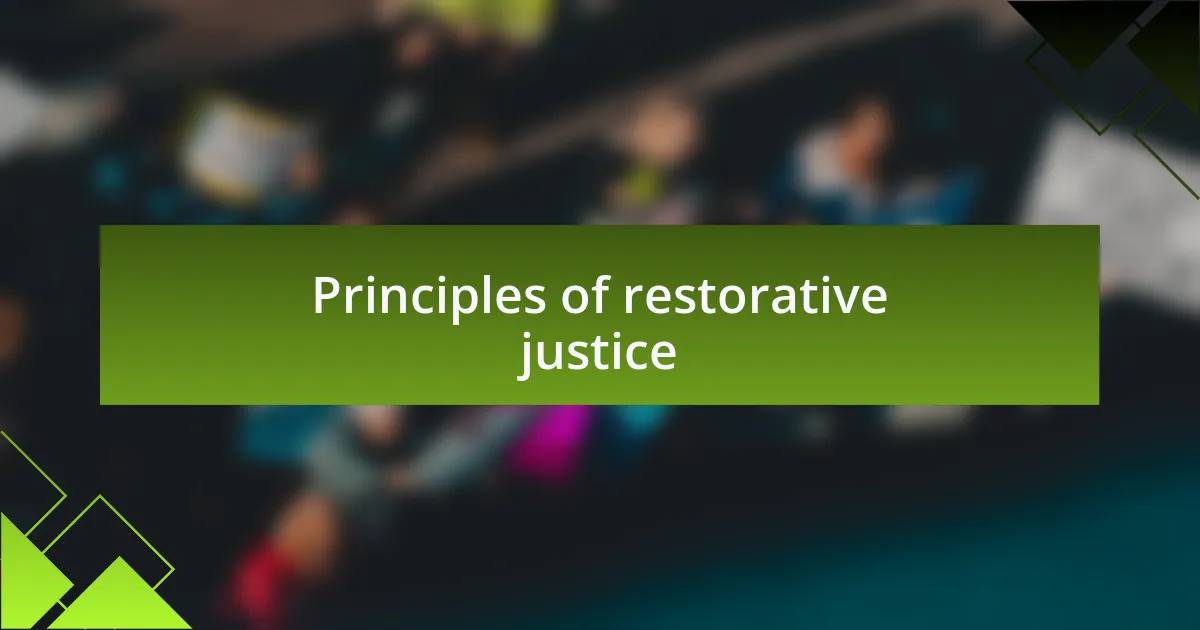
Principles of restorative justice
Restorative justice is rooted in the principles of acknowledging the harm caused by wrongdoing and promoting healing for both victims and offenders. Reflecting on my own experiences with conflict, I’ve seen how addressing the underlying causes of harm can lead to genuine reconciliation. Have you ever considered how powerful it is to repair relationships instead of perpetuating cycles of violence?
Central to restorative justice is the idea that justice should not simply be about punishment, but about restoring balance in the community. I remember a community meeting where a victim shared their pain and an offender expressed remorse. It was moving to witness them engage in a dialogue that prioritized understanding and empathy over blame. This interaction sparked a thought in me: how often do we miss the opportunity to foster healing because we default to punitive measures?
Furthermore, restorative justice emphasizes the importance of accountability, while also recognizing the potential for change. I’ve had conversations with individuals who once thought they were beyond redemption, but through restorative practices, they realized their capacity to grow. This leads me to ponder: if we truly believe in the possibility of transformation, shouldn’t our justice system reflect that belief?
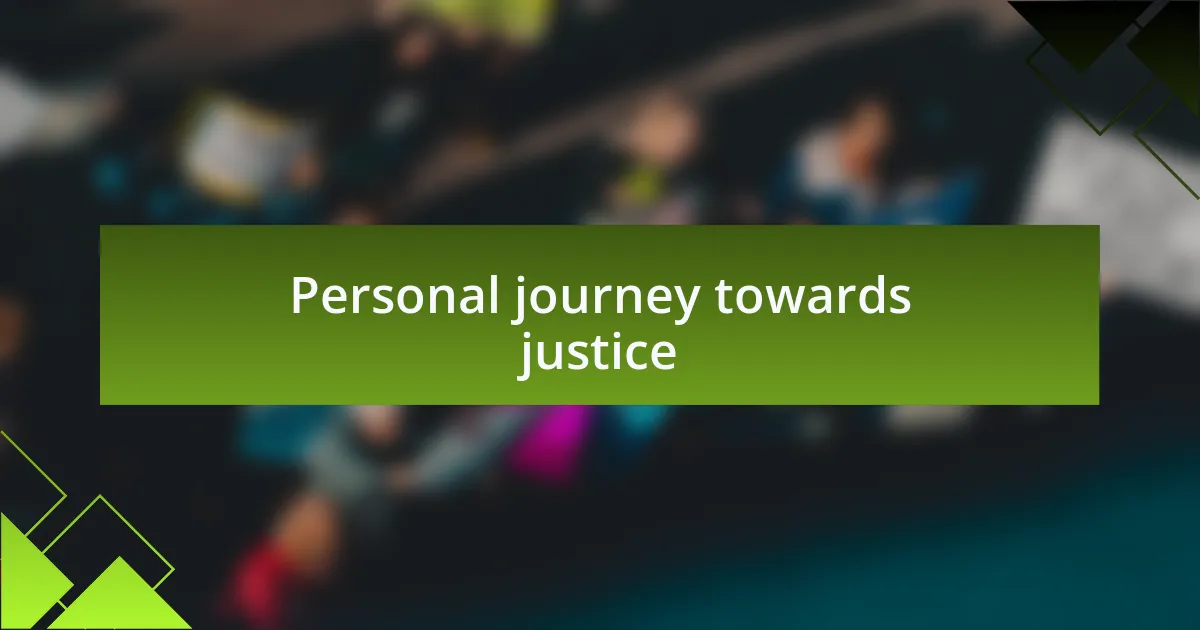
Personal journey towards justice
It wasn’t until I attended a restorative justice workshop that I truly began to understand the depth of healing required for all parties involved in conflict. During a group exercise, I shared my experiences of feeling wronged, and I was surprised by the empathy I received. It dawned on me: how can we heal if we don’t first express our hurt?
As I delved deeper into these concepts, I encountered stories from individuals who experienced transformative justice firsthand. One particularly impactful story was shared by a man whose life changed after participating in a restorative circle. He recounted how hearing the victim’s perspective shifted his understanding of his actions. This made me reflect: isn’t it remarkable how, in sharing our truths, we create spaces for collective healing and understanding?
This journey has made me question the traditional views on justice. How can we advocate for a system that prioritizes punishment over restoration? With every conversation I engage in, I feel more compelled to promote approaches that allow for dialogue, reflection, and ultimately, a movement toward redemption. Each story I hear reinforces the idea that true justice lies not in retribution, but in our capacity to connect and rebuild.
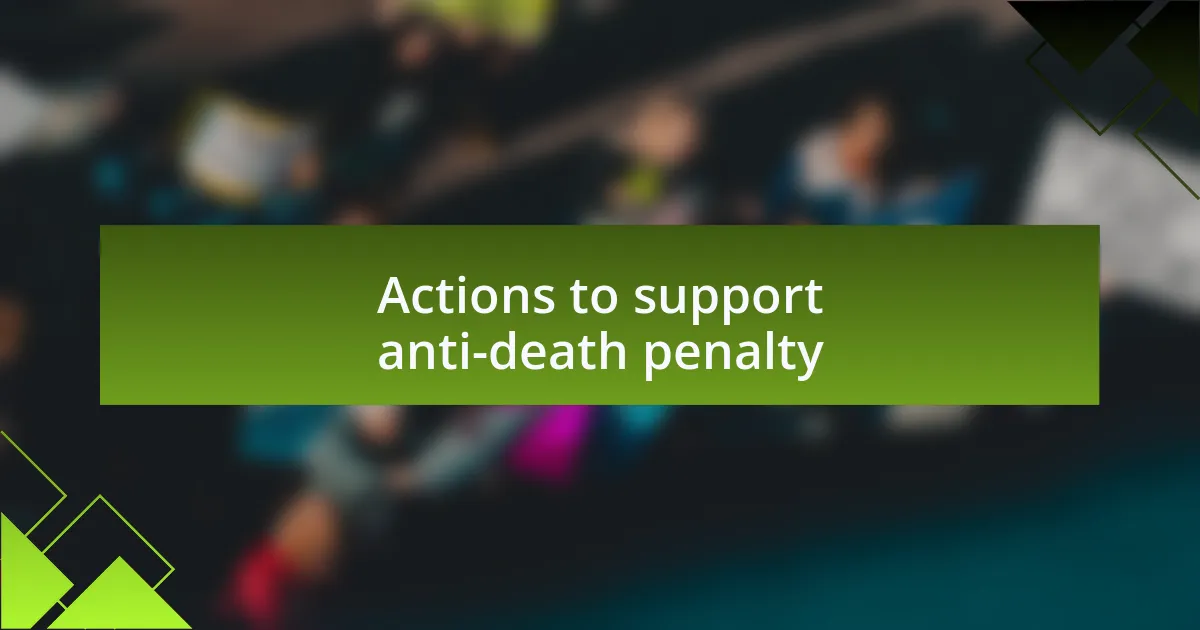
Actions to support anti-death penalty
One of the most impactful actions I took to support the anti-death penalty movement was volunteering with organizations that work on inmate rehabilitation. I remember visiting a local prison and hearing inmates discuss their hopes and dreams. It struck me how their potential for change often gets overshadowed by society’s desire for punishment. How can we as a community ignore the possibility of transformation in individuals who have made mistakes?
Another significant step I took was participating in advocacy campaigns aimed at changing legislation regarding the death penalty. I joined rallies and engaged with legislators, sharing personal stories of those wrongfully convicted. It was eye-opening to see how these narratives can resonate with others, prompting them to reconsider their stance. Isn’t it powerful how one voice can spark a conversation about humanity and justice?
Additionally, I made a point to educate myself and others about the systemic issues that perpetuate the death penalty. I held discussions with friends, emphasizing the disparities in the justice system that often lead to unjust sentences. I found that many people were unaware of the statistics surrounding wrongful convictions and racial bias. That realization prompted me to ask: how can we advocate for change if we aren’t fully informed and engaging in these crucial conversations?
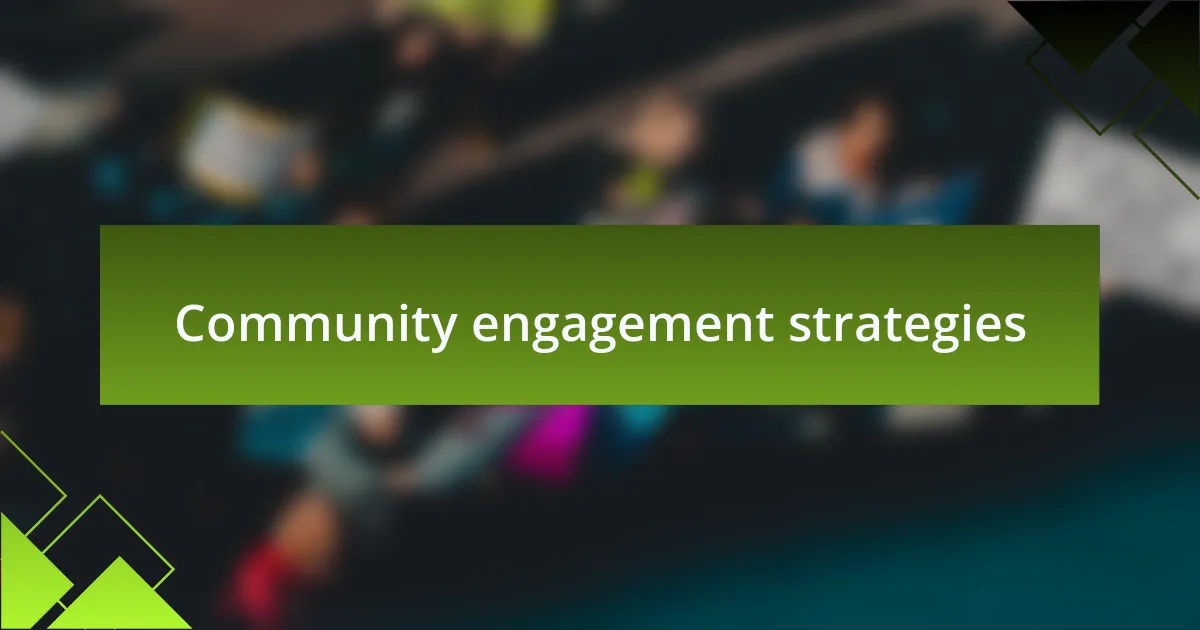
Community engagement strategies
Building strong community engagement strategies is crucial in the fight against the death penalty. I remember organizing a neighborhood workshop where we invited speakers like lawyers and former inmates to share their experiences. The conversations were raw, emotional, and opened many eyes to the reality of life behind bars. How often do we take the time to truly listen to those most affected by our justice system?
Another strategy I found effective was creating art installations that depict the stories of those impacted by the death penalty. I collaborated with local artists and community members to express the pain and hope intertwined in these narratives. Visiting the exhibit, I was overwhelmed by how art could transcend words, sparking connections among people who might not typically engage with this issue. Can creativity be a bridge to understanding and healing?
I also initiated a book club focused on literature about justice and punishment. Each session fostered deep discussions, and I found it fascinating how literature could reflect reality and allow us to explore complex feelings about guilt, redemption, and community responsibility. This made me wonder, what if more people embraced dialogue through shared stories? The potential for change becomes evident when we learn from each other’s perspectives, building a community united in the pursuit of justice.
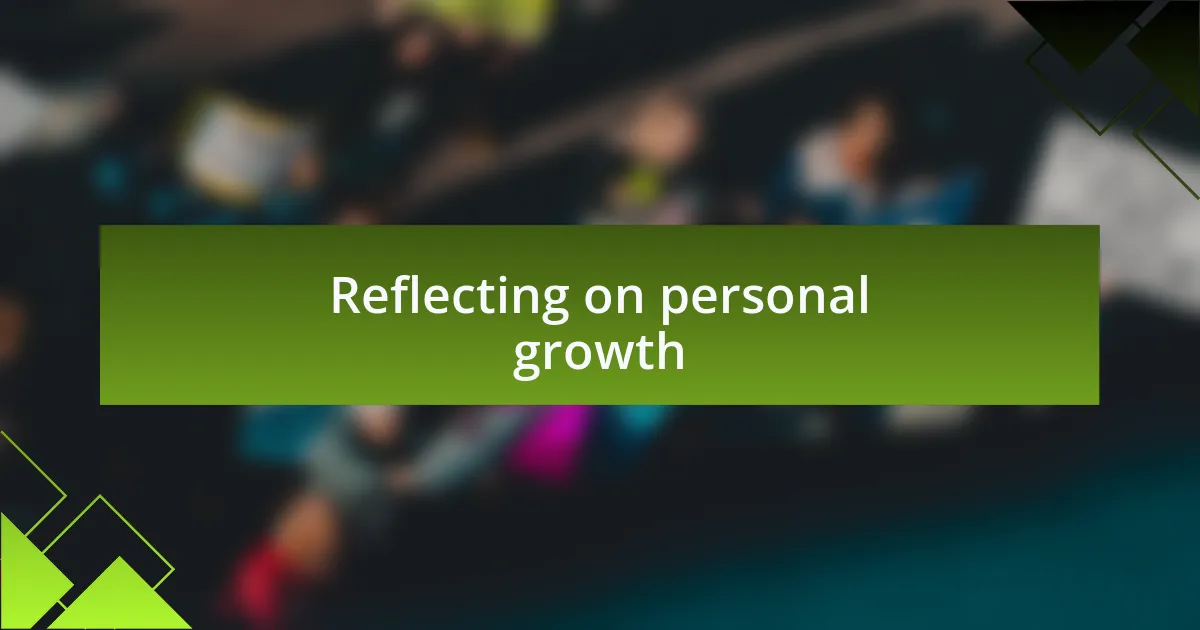
Reflecting on personal growth
Reflecting on my personal growth, I’ve come to realize that embracing transformative justice requires a shift in mindset. I remember my initial hesitation to engage with the complexities of justice reform; it felt overwhelming. But as I immersed myself in meaningful conversations with those directly affected by the death penalty, I found my understanding deepening. Have you ever experienced a moment when your perspective shifted dramatically? I definitely have.
Through this journey, I’ve discovered that personal growth isn’t just about learning facts; it’s about understanding emotions. Attending a vigil for victims of violence, I listened to heartfelt stories of loss and forgiveness. It was a poignant reminder that healing can coexist with anger and grief. This experience taught me that true justice isn’t only about punishment but restoring a sense of dignity for all involved. Can we reshape our views if we acknowledge these complexities?
Moreover, I’ve learned the importance of vulnerability in this work. Sharing my thoughts in community circles, I opened up about my fears of not making a difference. The supportive responses I received were transformative; they reminded me that we all walk our paths of learning together. This realization drives home the connection between community and personal growth—each conversation, each story shared helps me evolve on this journey toward justice. How can we cultivate environments that encourage such openness? For me, it starts with listening—truly listening.